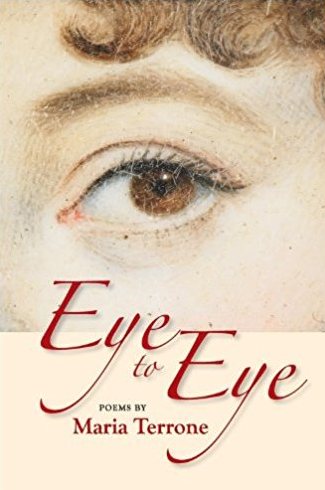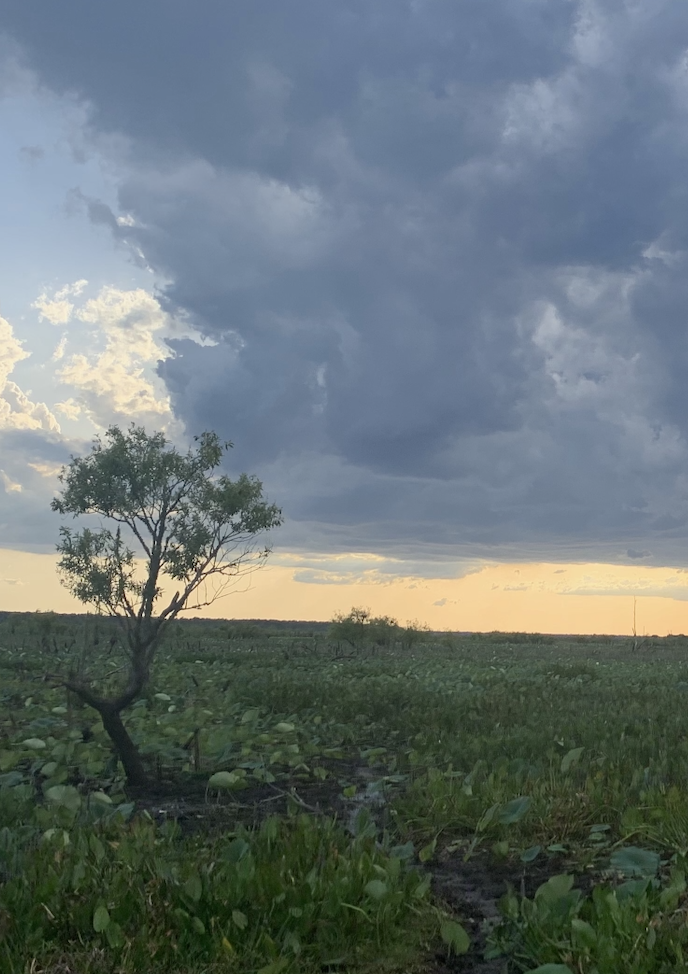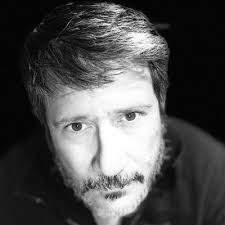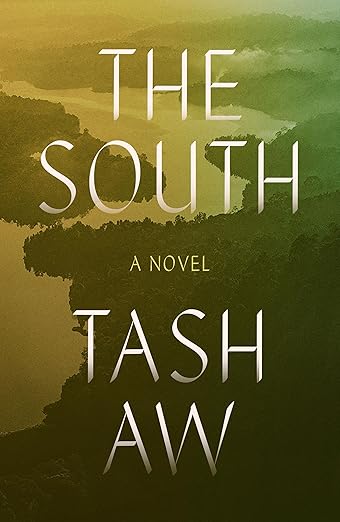Book by MARIA TERRONE
Reviewed by

“Once / a single cell / found that it was full of light / and for the first time there was seeing.” With these words from W.S. Merwin, Maria Terrone opens her third full-length collection of poetry, Eye to Eye. If the unifying theme of Terrone’s book is seeing, as this quote and the book’s title imply, then Terrone sees the world in all its blemished and brutal multiplicities. She sets the stage with the collection’s first poem, “Spaccanapoli.”
I’m a stumbling novitiate here
in jutting shadow, glancing at my watch
when a church bell tolls:
it’s 1:15, a time of no apparent meaning
“Spaccanapoli” is a poem, like many in the book, of vivid sensory images where
the bell resounds, insistent as old men roaring
by on vespas like God almighty, click of stiletto sandals
on Magna Graecia stones, Bulgari jewels that spin
prisms down shop-clotted alleys.
This is the only poem in Eye to Eye that places its speaker in southern Italy, the beloved homeland of Terrone’s grandparents, which she has visited in many poems in previous collections. Italy, it seems, is the dream. Yet for much of the book, the speaker confronts the quotidian, the world of New York. There, the poet is voyeur, spying on not only those around her—neighbors, family, strangers, alive and imagined—but also on herself watching. This from the second poem “From Where I Sit”:
Do you think I’m a coward
as I move a fraction closer
to the window pane, behind the drape
watching people rush home from work?
The narrator does not attempt to justify herself. Nor does she suggest an answer. Instead, the question, rhetorical, sets the reader up for what is to come.
To readers familiar with Terrone’s first two full-length books of poetry, A Secret Room in Fall, and The Bodies We Were Loaned, this third collection will feel familiar. As with many of her earlier poems, Terrone creates a tension between rhythm and rhyme, form and free verse. There are several fourteen-line poems mimicking sonnets—“Tango Room,” “The Gargoyles Rebel,” “Flight,” “Giraffes, Once Dismissed as Mute,” “Two Doors”—while playing with line length and cadence. Other poems such as “Swan’s Wake,” “Shorn,” and “The Day After,” which appear at first glance to be sonnets, are thirteen or fifteen lines instead of the expected fourteen. Terrone often crafts her poems into ordered stanzas—couplets, quatrains, quintets. In this book, however, poems have an extra line in one stanza or break in unexpected ways as if the poems refuse to be contained or the poet decided that to strap the poem into seats originally intended no longer felt appropriate. The unexpected twists lend an air of unruliness and of emotion barely contained, which suits many of the book’s difficult topics, such as the loss of parents, a job, and, for a time, even the narrator’s own apparent fight with cancer. This is from the poem, “Envying the Birds”:
Of course, their flight. How long
since I dreamed I was one of them,
cruising the neighborhood, marveling
at winged gargoyles
on apartment building tops?
As in Terrone’s previous collections, there are wonderful persona poems. One of the four sections, appropriately titled “In Disguise,” is comprised almost entirely of such poems. Yet Terrone maintains a photographer’s distance, writing most in the third person. Only three of thirteen poems from this section use the first person and only when the speaker resembles or could be taken for the poet. In all cases, Terrone uses the strategy of persona to delve beneath veneers, which barely conceal vulnerability. In “Garden of Vogue,” Terrone describes a woman who must be a fashion model, though this is never stated:
And there’s her pleated Calvin Klein gown
imprinted with a pattern of skin or blood
seen through a microscope
and just below the shoulder, that bruise.
And, “Slipping inside a chain / cosmetics store big as a hangar, / feeling disembodied,” the speaker of “42nd Street” observes a man:
A fine line of black tears is precisely
drawn on his opaque chalk-white face,
raised in the hope of help’s arrival.
In poem after poem of this mesmerizing section, the strongest of the book, Terrone uses the short lyric to expose the struggle, sorrow, and menace running beneath the surface of people and things. Even snow cannot be trusted as Terrone writes in “The True Intention of Snow:”
This snowfall
began with a kiss
on eyelashes,
then toppled power lines,
stranded trucks,
and tricked a woman
who slipped
into its embrace—
There are moments of transcendence in this book. In “Above the Forests of Second Avenue,” Terrone writes:
We hardly notice when the flowers appear,
stem, leaf, then bud, and how they spread
across the field that ripples on her lap,down her legs’ spindly trellis, over the cracked plain
of a railroad flat five flights above the forests
of Second Avenue, strewn across an ocean,
back to the hills of Lercara Friddi,
Here, images of rebirth and beauty are literally embroidered into the fabric of daily life. Not surprisingly, the poem refers to Italy, probably the birthplace of the old woman doing the work, past and present intertwined on her lap.
Yet, despite these moments of solace, this is a collection of—if not December—September poems. The narrator experiences the losses of a person moving through middle age and into late adulthood. Fittingly, the last poem evokes winter.
Snow slips off its lustrous sheath,
shimmies into black, merges
with air—you know, that slick
magic act. I turn on every lamp,grateful for hundred-watt fires.
There are no stars tonight
to demand homage
before their cold and distantsilence: tonight, only
the immeasurable spaces
between them and a need
expressed with a negative:not to be invisible. So I’m making
what I can against the hours:
this bed strewn with poems
ripped from magazines,these blue tracks across white tundra
that my pen may follow,
this smoky wisp
rising form somewhere.
In these final twenty lines, Terrone takes a stand against the darkness of disappointment and grief. If there is loss, there is still relevance and splendor in the experience and in the memory of what was. In this final poem, and throughout Eye to Eye, the written word is a bulwark against the advent of night.
Sarah Wetzel is the author of River Electric with Light, which won the 2013 AROHO Poetry Publication Prize and is forthcoming from Red Hen Press, and Bathsheba Transatlantic, which won the Philip Levine Prize for Poetry and was published in 2010.



